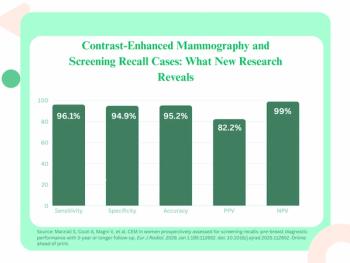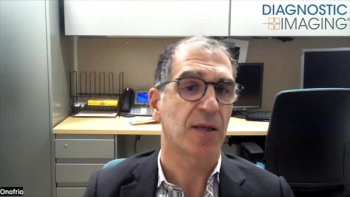When Radiologists are Held Captive by Unreachable Referring Clinicians
There are cases that warrant verbal communication with referring clinicians, but making that communication happen can, at times, be a challenging responsibility.
You’re a capable radiologist. You just read a case and finalized your signed report. That’s it, right? There is nothing more to be done. That’s what “final” means unless you work in an airport, in which case you evidently have to say “last and final” for some reason.
Anybody who has dealt with radiology even a little bit knows that signing your report isn’t at all necessarily the end of your involvement with the case. Putting aside the fun of addenda, QA citations and legal entanglements, there is a very common routine that follows more than a few digital signatures.
Verbally alerting folks of your findings.
You wouldn’t, for instance, close out and forget a case in which you identified imminently life-threatening abnormalities. Why should it sit in the ether till a clinician happens to read your report? Heck, for some stuff, you wouldn’t even wait until your report was done before raising the alarm. A bleed in someone’s brain should be communicated before you have finished detailing all the foraminal stenoses in his or her cervical spine.
Plenty of other, non-immediately lethal stuff merits verbal communication. There may be malpositioned tubes and lines, new cancers, etc. There is no point trying to list it all here. These are concepts that a radiology resident hopefully learns before completing training. The logistics, however, aren’t always so simple. Just because we know a phone call is warranted and do our part to make that happen, that doesn’t mean others are going to cooperate.
You might be a paragon of responsibility in trying to ring up the referring clinician, or whoever is taking care of the patient at the moment. However, if that clinician doesn’t get on the line, it is still your problem.
It doesn’t matter if the clinician ordered the imaging study super-duper STAT, wrote in all capital letters with red ink that he or she wanted to be verbally notified of results, etc., you have no magical ability to make referring docs pick up the phone when you try doing your part.
Sometimes, it feels like they don’t want you to be able to get in touch with them. The only phone number you have is the general line for their office, for instance, and even their own staff can’t get ahold of them (although sometimes you might wonder how hard they’re really trying). In other situations, the staff may be gone, and their office’s message has no mechanism for getting ahold of anybody. They seem to think that “If this is an emergency, dial 911” adequately covers all contingencies.
It has an obnoxious tone to it. Here we are tying ourselves in knots to do the right thing, and it feels like they’re indifferent or actively working against us. Meanwhile, if we shrug off the responsibility and the referring clinician finds out about the results later on, we know darned well the referring clinician will pitch a fit that we didn’t alert him or her, or eagerly testify against us in any ensuing malpractice proceedings.
Sometimes, there is an extra layer of obnoxiousness when we wind up speaking to a “physician extender,” such as a nurse or physician assistant, who is supposed to be covering for the doc, but then the extender actually refuses to take results. This past week, it wound up taking two whole hours for me to confirm that somebody knew about an enlarging pneumothorax.
There is one failsafe I learned along the way. If absolutely nobody else steps up, sometimes one can just call the patient and tell him or her to go to an ER. Fortunately, I have only had to do this a couple of times. I say “fortunately,” in part, because I would feel the need to explain how I had tried to tell the patient’s doc about the situation. I don’t know how well I would be able to veil my disdain for the uncommunicative parties.
It is a funny thing how so many of these “gotta call results” cases cluster at inconvenient times. I can go through an entire day with virtually none. Then, in my last hour of work, suddenly I have three of them. This not uncommonly occurs after the referring clinicians’ offices have closed or when nurses are changing their shifts and are unable or unwilling to get on the horn.
When I was in training and much of society (myself included) still didn’t have cellphones, reading out such a case effectively made the radiologist a captive. You couldn’t leave until you had “closed the loop,” and there was nobody else to do it for you. Maybe things were different at the attendings’ level or in other facilities. Perhaps when someone had been trying for an hour and wanted to go home for the day, he or she could prevail on a colleague to take over the mission. Still, how could you know that your pal would successfully see things through and properly document them? If you wanted to know for sure, you were stuck there indefinitely.
As time marched on, things got better. Maybe it was simply a matter of enough rads being held captive that something in the system had to give, or maybe society can sometimes stumble way toward common sense. For a little over a decade, now, everywhere I have worked has had ancillary staff charged with making these communications faster and more reliable. These are folks you can tell, “I need to speak to the relevant doc,” or “We need confirmation that someone is aware of this report,” and they make it happen. Meanwhile, we rads can move on to other things, our own lives included.
Newsletter
Stay at the forefront of radiology with the Diagnostic Imaging newsletter, delivering the latest news, clinical insights, and imaging advancements for today’s radiologists.





























